I am back, but I am heading out the door again soon.
Before I disappear again though, I wanted to share a quick summary of the humpback whale (Megaptera novaeangliae australis) calving season in Tonga this year.
First, a photo. This one of a baby boy pulling a fancy move with his flippers: 
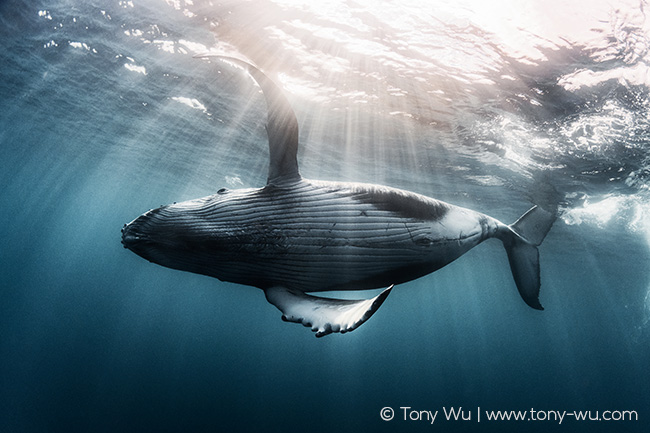
A Thai friend I shared this with immediately noted the similarity of his pectoral position to the elegant hand position that starts the Ram Wong dance. (see images)
I can definitely see it!
Anyway, it was another good year for baby humpback whales. Without going into excessive detail, here is an easy-to-understand graph of statistics I’ve kept continually since 2009. You can think of it as a measure of the density of humpback whale calves in the Vava’u island group during the season, represented as a calf/ boat-day figure.
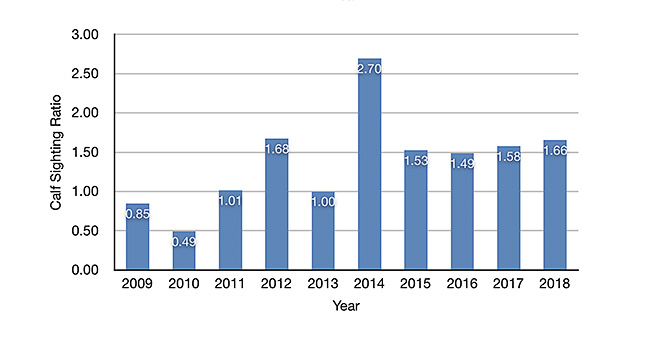
The number of 1.66 is in line with recent seasons. And again this year, I had a solid idea of where the season was headed within a few days of being on the water.
It’s definitely good to have quantitative records, but there’s also a qualitative feel, for lack of a better word, that comes with each season. It usually only takes me a few days to pick up on it.
The numbers above can be divided further into (a) calves I was able to ID and (b) calves I was unable to ID, with IDs based on having sufficient in-water photos of both mother and calf to be able to match re-sights.
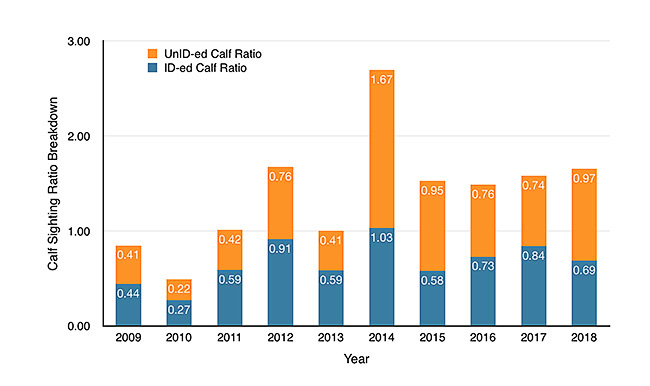
In general, the relative proportion of orange to blue in the graph above provides some indication of how difficult conditions were in a given season, with said difficulty being a combination of many factors—weather, wind, water conditions, whale mood, the number and behaviour of boats, etc. The greater the orange section as a proportion of the whole, the tougher the season.
The exception to this rule was in 2014, when there were so many whales that I was overwhelmed. This resulted in the inflation of the orange area, i.e., calves I saw but didn’t have time to check out because I was too busy with other baby whales. It was a good problem to have.
The IDs of course mean that I can confirm with 100% certainty when I have a repeat encounter with a given baby whale. This season, I had a number of mother/ calf pair re-sightings, summarised in the chart below:
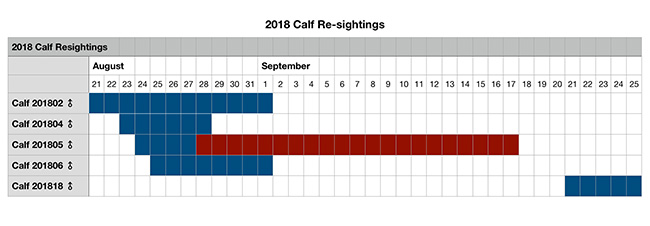
You might notice two things, other than my exemplary use of spreadsheet software.
The first is that I saw calf 201805 three times: 24 August, 27 August, and 17 September (blue + maroon).
Normally, there are only a few days between re-sightings, as you can see from the other calves. I’ve had a handful of mother/ calf pairs over the years that I’ve seen over relatively long periods of time. Calf 201805 this season spanned 25 days in total. The longest stretch that I recall prior to this year was 33 days with calf 201114. (Yes, I can remember specific baby whales from the beginning of the decade, but I can’t recall names of people I met last week.)
The second thing that might pop out at you is that all the re-sights are of male calves.
This season, the first eight calves that I encountered and ID-ed were males. I didn’t encounter a single female calf until I had spent 12 days on the water. For a while, it seemed as if there were no female calves around!
Of course, that wasn’t actually the case. I ID-ed 11 male and 8 female calves this year. I’m sure it’s just random, roll of the dice so to speak, but I spent a lot more time with baby boys this season that I did with little girls. (As an aside, I’ve photo-ID-ed 313 calves since 2008.)
Here is what the ratio of female-to-male calves that I’ve ID-ed has looked like since 2009:
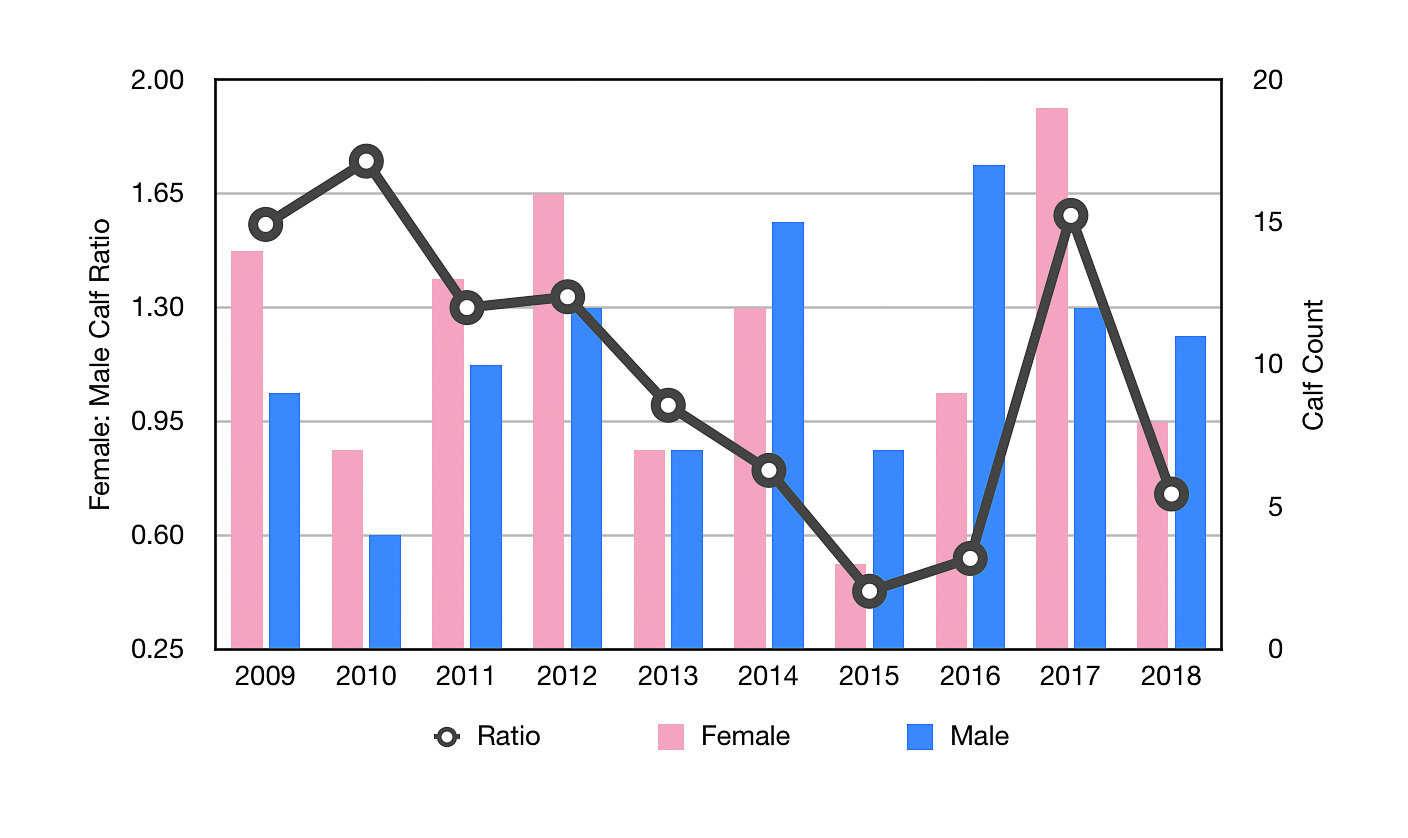
Photographically, it was a terrific season. Once again, I have more photos than I’ll ever have time to process, especially since I am off again.
For example, the photo below is a different take on a portrait of a mother and calf, in this instance, a beautiful little girl mirroring her mother’s body language. Isn’t she adorable?
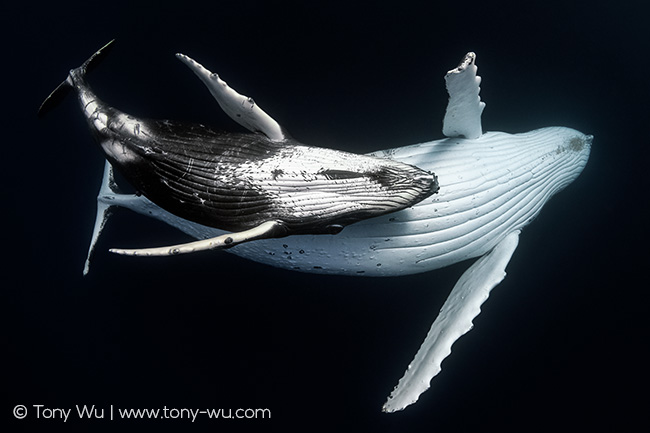
The best part of the season without a doubt though, was spending time with friends.
I cut off from the Internet for the most part, just as I did last season, to avoid distraction, noise, online narcissism and what seems to be global insanity.
The result?
Deep discussions, lots of laughs, a plethora of insults (aimed primarily at David who, in fairness, pretty much begs to be insulted), board games (I’m still not quite sure how we won Cranium), hermit crab races, staring contests with canine friends, shared meals (both cooking and eating), and some of the best conversations I’ve had in recent memory—thanks especially to the amazing company of two wonderful 11-year olds and a 15-year old friend. You are all inspiring, terrific people!
Unpacked gear and clothes are staring at me, so I’ll wrap up here, leaving you with a couple of non-whale photos, the first a brown booby (Sula leucogaster) taking off after grabbing a sardine:
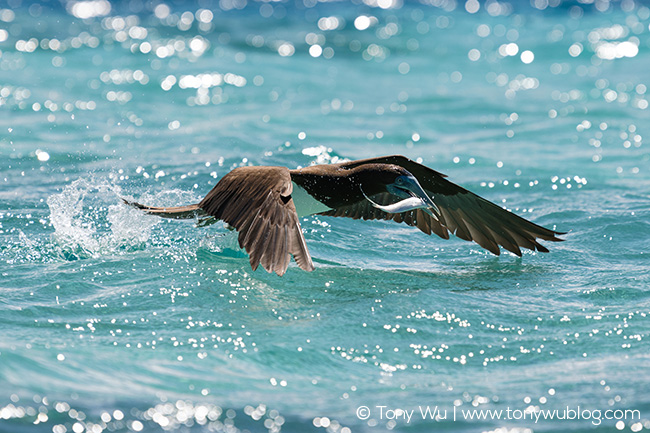
And finally, a portrait of new friend Rocky at sunrise, shortly after his fourth birthday:
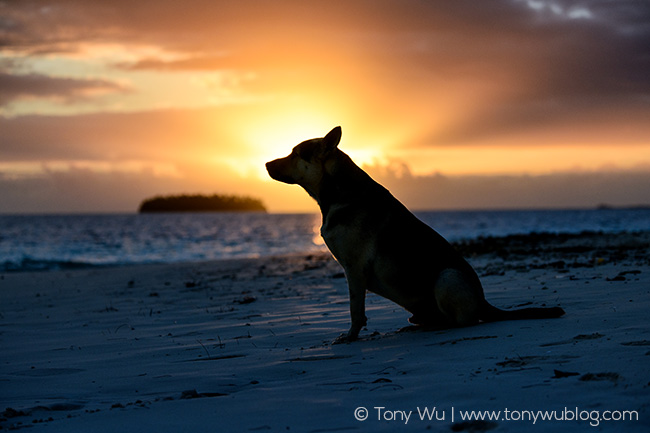
PS: I never saw super mommy or heard that anyone else did. If you did, please let me know.
PPS: Oogway is healthy and happy. He’s 4.5cm at the shell now. He’s not moving around as much as before, but I think it’s because of the cooler autumn climate. He might be preparing for hibernation. I think I’m going to buy him a heating pad though, so he can stay toasty through the winter. I know, I know. I'm a sucker for a cute face and little flippers.
PPPS: I'm in the process of communicating with friends who've expressed interest in spending time with me next year while I'm with the whales. It's taking a while to respond (sorry!) because, well, it's me. Please let me know if you're interested in, and I'll get back to you as soon as I can.